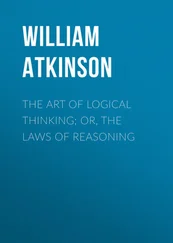Hyslop says: “Description, Explanation, and Exposition are processes by which we endeavor to narrate facts and thoughts in a systematic and orderly manner. They are designed to give an intelligible and methodical conception of the data that are connected with a particular theme. But they are not designed to convince the mind. They may incidentally do this, but it is not the primary object to create conviction. They are occupied with the formation and presentation of clear conceptions, systematic and methodical discourse, which does as much to make ideas intelligible as it does to please the sense of order. But Proof and Argumentation go beyond this. They endeavor to remove doubt, to give belief and knowledge to the intellect.”
The ancients, who placed the highest value upon Argumentative Discourse, particularly in the form of orations, and who reduced this form of expression to a fine art and almost to an exact science, divided the Formal Argument into six steps, as follows: (1) The Exordium or Introduction; (2) the Division; (3) the Statement; (4) the Reasoning; (5) the Appeal to the Emotions; and (6) the Peroration or Closing.
Modern authorities incline to the opinion that this arrangement is rather too artificial for effectiveness and easy expression, and the employment of it to-day is apt to produce the effect of pedantry or stiffness. But, a close analysis will show that these successive steps, or at least some of them, are employed to-day in every argument, long or short, from the address of the lawyer, or the sermon of the preacher, to the “selling talk” of the modern salesman. Whether or not this be recognized, it will be well for the student to consider these several steps of the ancients, in order that he may grasp the meaning of each and thus be able to employ any or all of them when occasion necessitates it. Accordingly, we shall follow this arrangement in considering the Principles of Argument.
The Exordium or Introduction of an Argument is generally conceded to be one of its most difficult steps. It is important that the person making the argument make a good impression upon his hearers so as to render them attentive, well-disposed, and open to persuasion as he proceeds. The following suggestions, representing the opinion of some of the best authorities, are offered regarding the Introduction:
I. Endeavor to create the impression of earnestness, dignity and self-respect. There is nothing so impressive or contagious as earnestness, and nothing so hurtful as an apparent lack of it. The speaker who can make his hearers feel at the start that he believes in what he is saying—in the cause he is about to undertake, has scored heavily at the beginning, and has paved the road to a successful progress in his argument. On the other hand, he who causes his hearers to doubt his earnestness, or his belief in the justice and strength of his cause, is handicapped from the beginning. But one should not commit the mistake of telling his hearers in words that he believes in his cause—he should convey the impression by the suggestion of his manner and mental attitude. The conviction and earnestness of a speaker need not be told in words to his hearers, any more than the virtue of a woman or the honesty of a man need be verbally asserted to those to whom they come in contact—they must be suggested to others by one’s acts and manner. The man who cries: “I am honest;” the woman who continually asserts, “I am virtuous;” or the speaker who tells his hearers, “I am in earnest,” himself raises the question and is in danger of being misunderstood and doubted. Some things must be left to the power of suggestion. Dignity and self-respect are qualities which favorably impress hearers, and the lack of them tend to lessen one’s influence. But, remember that dignity does not mean pomposity ; nor does self-respect mean manifest egotism or foolish pride!
II. Endeavor to attract the Attention of your hearers at the start. Attention is the first step in any mental process, and he who would persuade or convince his hearers must first manage to secure their attention. Attention may be secured by presenting the opening features of the subject in a novel, attractive manner. The unusual always attracts the attention. If the curiosity of the hearers can be aroused, attention results naturally. Attention depends largely upon interest. Interest may be aroused by presenting the subject in a novel, new manner, and may be held by changing the object or subject presented to it. Interest grows tired when the subject grows monotonous— it demands variety. It will be well to observe the following two rules of Attention and Interest, as given by Halleck: “(1) Attention will not attach itself firmly to uninteresting things; (2) It will soon decline in vigor, (a) if the stimulus is unvarying, or (b) if some new attribute is not discovered in the object.”
III. Let your Introduction appear easy and natural, rather than labored or stilted. The conversational tone is effective, and tends to establish a feeling of intimacy between speaker and hearers. Cicero says that “The Introduction must appear to have sprung up of its own accord from the matter under consideration.” He held that in preparing an address or speech, the Introduction should not be composed until the later steps of the discourse have been completed, or at least until the succeeding steps of the argument are fully planned out and digested. In this way, he held, the Introduction will be full and complete, and in perfect harmony with the thought and words to follow it. This advice is approved by some of the best later authorities.
IV. While you should arouse interest and curiosity by your Introduction, you should avoid claiming too much at this stage, or promising too much. It is well to exercise a little modesty here, for if you create expectations which you cannot realize, or make statements which you afterward fail to “make good” you create a feeling of disappointment, doubt and impression of failure. It is well to be bold and positive in your opening claims, but this is far different from making claims which cannot be substantiated. Better a “measure heaped full and running over” of fulfilment, than “a sky-rocket introduction and a falling-stick finish.”
V. Avoid passionate appeal, vehemence, or strong feeling in the beginning. It is far better to appear to be laboring under repressed feeling and emotion, than to burst into feeling at the start. Save your emotion and feeling for later steps. The minds of your hearers should be led step by step toward strong feeling or passionate appeal. If, however, the nature of the subject is one allied to passionate feeling, the latter may be subtly suggested in the beginning, and then apparently held back for the appeal to reason.
VI. Never anticipate a material argument, or effective point of your argument, in your Introduction. You waste your powder by failing to observe this precept. Confine yourself to general statements in your opening, and save your heavy ammunition until the stage in which it will count.
VII. Measure your Introduction by your main discourse. Do not preface a short, argumentative discourse by a long Introduction, nor a long discourse by a trifling Introduction. As an authority has said: “The Introduction should be accommodated, both in length and character, to the discourse that is to follow; in length, as nothing can be more absurd than to erect an immense vestibule before a diminutive building; and in character, as it is no less absurd to overcharge with superb ornaments the portico of a plain dwelling-house, or to make the entrance to a monument as gay as that to an arbor.”
The Division of an Argument is that step in the discourse in which the speaker states the general method or plan of argument to be followed, and the heads or divisions of the subject of the discourse. This step of the Argument is often omitted, particularly in cases in which the nature of the argument confines it to one or more leading points. Some of the best authorities advise speakers to omit this step of argument wherever possible, citing the tiresome and tedius practice of the old-time preacher with his interminable “heads” and “divisions”—his “thirdly” and “fourthly”—as a horrible example. But even if this step be omitted, the speaker should observe a formal plan of division and method in his address.
Читать дальше












